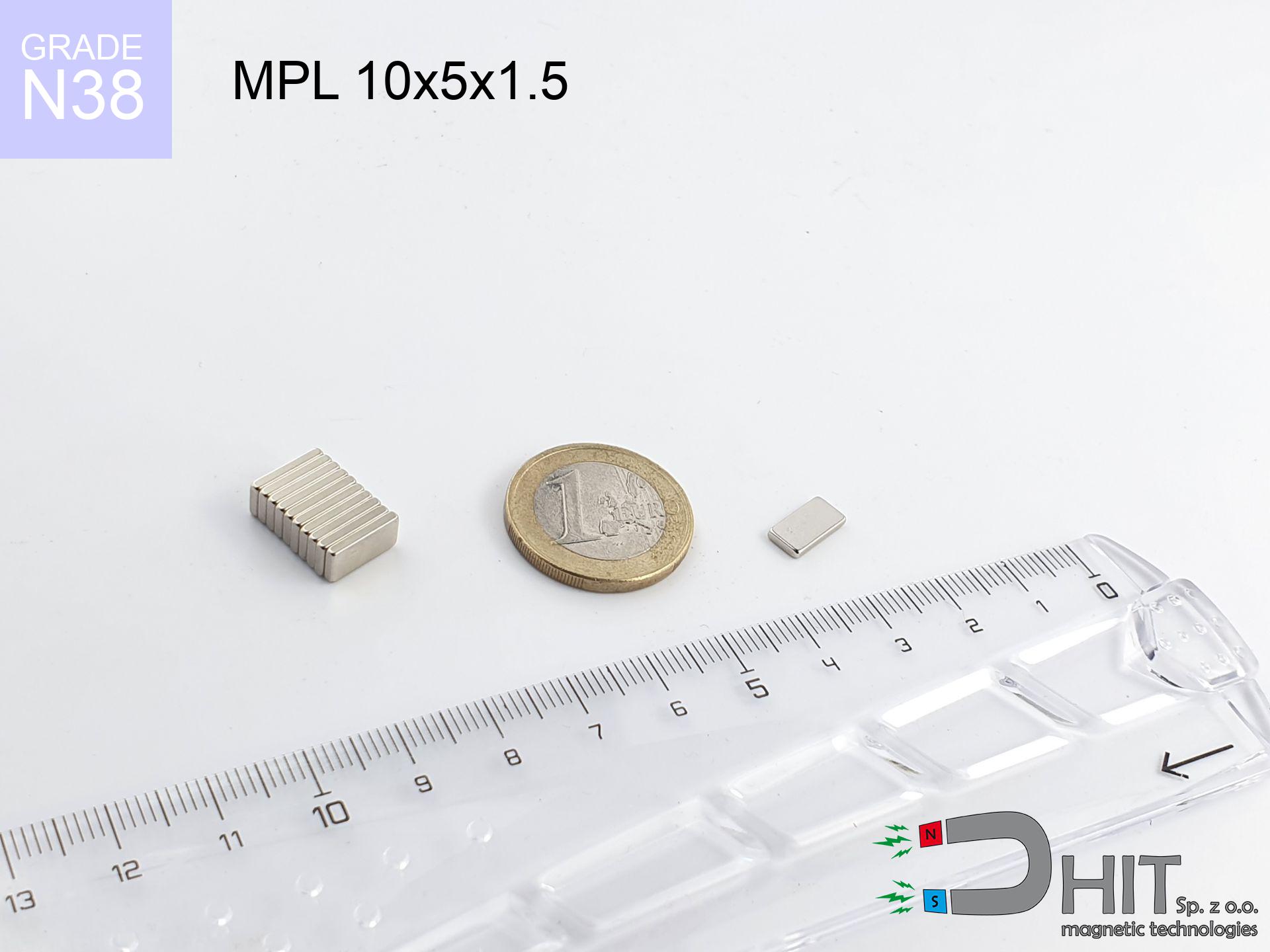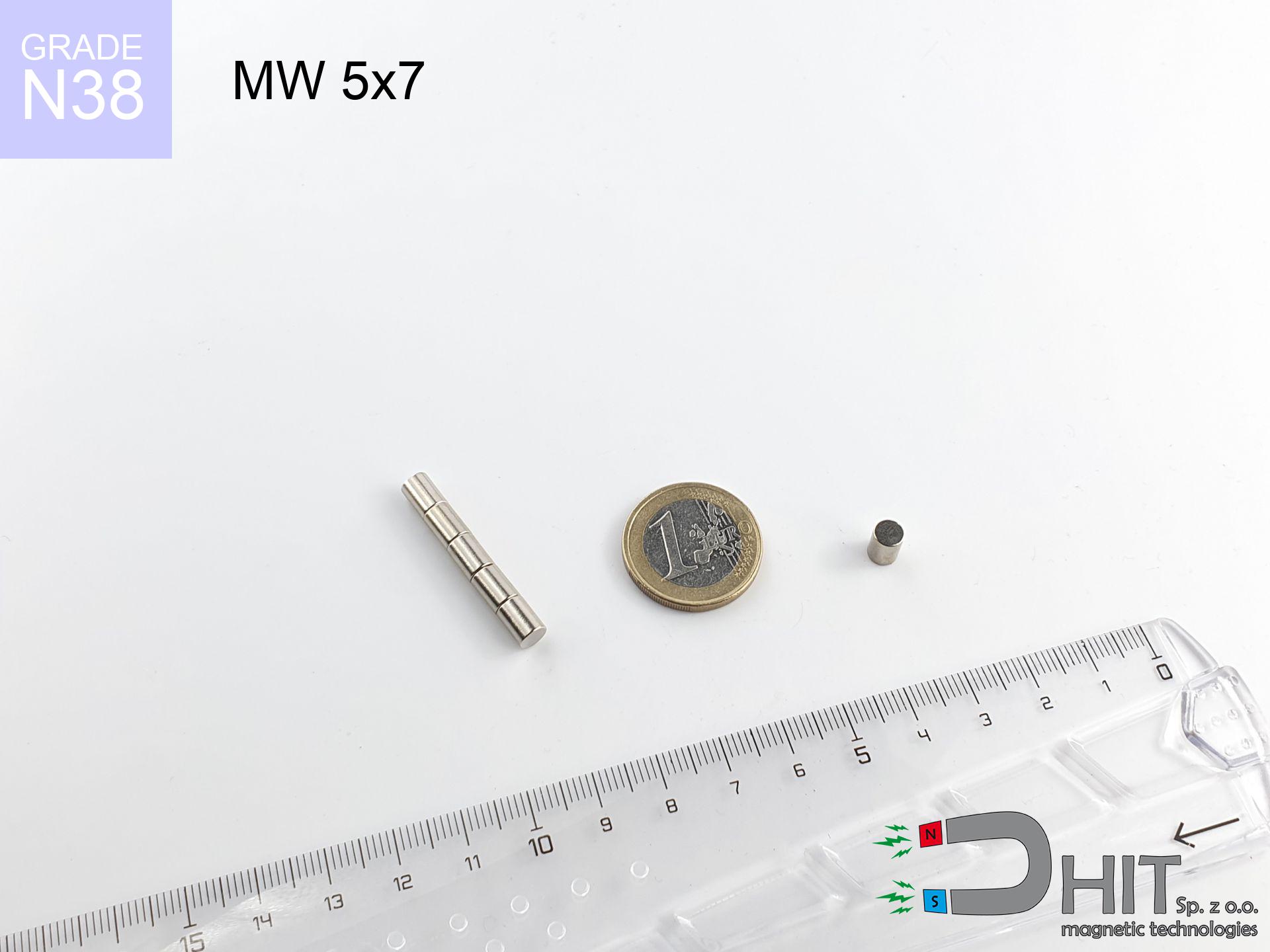SM 32x225 [2xM8] / N52 - magnetic separator
magnetic separator
Catalog no 130361
GTIN/EAN: 5906301813095
Diameter Ø
32 mm [±1 mm]
Height
225 mm [±1 mm]
Weight
1205 g
Magnetic Flux
~ 10 000 Gauss [±5%]
676.50 ZŁ with VAT / pcs + price for transport
550.00 ZŁ net + 23% VAT / pcs
bulk discounts:
Need more?
Contact us by phone
+48 22 499 98 98
otherwise let us know using
our online form
the contact page.
Parameters along with structure of neodymium magnets can be analyzed with our
magnetic calculator.
Same-day processing for orders placed before 14:00.
Technical parameters - SM 32x225 [2xM8] / N52 - magnetic separator
Specification / characteristics - SM 32x225 [2xM8] / N52 - magnetic separator
| properties | values |
|---|---|
| Cat. no. | 130361 |
| GTIN/EAN | 5906301813095 |
| Production/Distribution | Dhit sp. z o.o. |
| Country of origin | Poland / China / Germany |
| Customs code | 85059029 |
| Diameter Ø | 32 mm [±1 mm] |
| Height | 225 mm [±1 mm] |
| Weight | 1205 g |
| Material Type | Stainless steel AISI 304 / A2 |
| Magnetic Flux | ~ 10 000 Gauss [±5%] |
| Size/Mount Quantity | 2xM8 |
| Polarity | circumferential - 8 poles |
| Casing Tube Thickness | 1 mm |
| Manufacturing Tolerance | ±1 mm |
Magnetic properties of material N52
| properties | values | units |
|---|---|---|
| remenance Br [min. - max.] ? | 14.2-14.7 | kGs |
| remenance Br [min. - max.] ? | 1420-1470 | mT |
| coercivity bHc ? | 10.8-12.5 | kOe |
| coercivity bHc ? | 860-995 | kA/m |
| actual internal force iHc | ≥ 12 | kOe |
| actual internal force iHc | ≥ 955 | kA/m |
| energy density [min. - max.] ? | 48-53 | BH max MGOe |
| energy density [min. - max.] ? | 380-422 | BH max KJ/m |
| max. temperature ? | ≤ 80 | °C |
Physical properties of sintered neodymium magnets Nd2Fe14B at 20°C
| properties | values | units |
|---|---|---|
| Vickers hardness | ≥550 | Hv |
| Density | ≥7.4 | g/cm3 |
| Curie Temperature TC | 312 - 380 | °C |
| Curie Temperature TF | 593 - 716 | °F |
| Specific resistance | 150 | μΩ⋅cm |
| Bending strength | 250 | MPa |
| Compressive strength | 1000~1100 | MPa |
| Thermal expansion parallel (∥) to orientation (M) | (3-4) x 10-6 | °C-1 |
| Thermal expansion perpendicular (⊥) to orientation (M) | -(1-3) x 10-6 | °C-1 |
| Young's modulus | 1.7 x 104 | kg/mm² |
Elemental analysis
| iron (Fe) | 64% – 68% |
| neodymium (Nd) | 29% – 32% |
| boron (B) | 1.1% – 1.2% |
| dysprosium (Dy) | 0.5% – 2.0% |
| coating (Ni-Cu-Ni) | < 0.05% |
Sustainability
| recyclability (EoL) | 100% |
| recycled raw materials | ~10% (pre-cons) |
| carbon footprint | low / zredukowany |
| waste code (EWC) | 16 02 16 |
Other proposals
Advantages as well as disadvantages of Nd2Fe14B magnets.
Advantages
- Their strength is durable, and after approximately 10 years it drops only by ~1% (theoretically),
- They have excellent resistance to weakening of magnetic properties as a result of external fields,
- The use of an refined layer of noble metals (nickel, gold, silver) causes the element to be more visually attractive,
- Magnetic induction on the top side of the magnet remains impressive,
- Neodymium magnets are characterized by extremely high magnetic induction on the magnet surface and can function (depending on the form) even at a temperature of 230°C or more...
- Possibility of accurate forming as well as adapting to atypical applications,
- Universal use in future technologies – they are used in hard drives, brushless drives, medical devices, and modern systems.
- Compactness – despite small sizes they generate large force, making them ideal for precision applications
Cons
- They are prone to damage upon heavy impacts. To avoid cracks, it is worth securing magnets in special housings. Such protection not only shields the magnet but also increases its resistance to damage
- We warn that neodymium magnets can reduce their power at high temperatures. To prevent this, we advise our specialized [AH] magnets, which work effectively even at 230°C.
- They rust in a humid environment. For use outdoors we advise using waterproof magnets e.g. in rubber, plastic
- Limited possibility of creating nuts in the magnet and complicated shapes - preferred is a housing - mounting mechanism.
- Health risk related to microscopic parts of magnets pose a threat, if swallowed, which gains importance in the context of child health protection. It is also worth noting that tiny parts of these products are able to be problematic in diagnostics medical when they are in the body.
- Due to neodymium price, their price exceeds standard values,
Lifting parameters
Maximum holding power of the magnet – what it depends on?
- using a plate made of high-permeability steel, acting as a magnetic yoke
- with a thickness no less than 10 mm
- characterized by even structure
- under conditions of ideal adhesion (surface-to-surface)
- under axial force direction (90-degree angle)
- in temp. approx. 20°C
Impact of factors on magnetic holding capacity in practice
- Gap between surfaces – even a fraction of a millimeter of distance (caused e.g. by varnish or dirt) significantly weakens the magnet efficiency, often by half at just 0.5 mm.
- Pull-off angle – note that the magnet holds strongest perpendicularly. Under sliding down, the holding force drops drastically, often to levels of 20-30% of the nominal value.
- Element thickness – to utilize 100% power, the steel must be sufficiently thick. Paper-thin metal limits the attraction force (the magnet "punches through" it).
- Steel grade – ideal substrate is high-permeability steel. Stainless steels may generate lower lifting capacity.
- Plate texture – ground elements ensure maximum contact, which increases field saturation. Rough surfaces weaken the grip.
- Temperature – temperature increase causes a temporary drop of force. It is worth remembering the thermal limit for a given model.
Lifting capacity was measured using a polished steel plate of suitable thickness (min. 20 mm), under vertically applied force, whereas under attempts to slide the magnet the lifting capacity is smaller. Moreover, even a slight gap between the magnet and the plate decreases the load capacity.
Safety rules for work with neodymium magnets
GPS Danger
An intense magnetic field interferes with the functioning of compasses in smartphones and navigation systems. Keep magnets close to a smartphone to prevent breaking the sensors.
Beware of splinters
Watch out for shards. Magnets can explode upon uncontrolled impact, ejecting sharp fragments into the air. Eye protection is mandatory.
Safe distance
Do not bring magnets close to a purse, computer, or TV. The magnetic field can irreversibly ruin these devices and wipe information from cards.
Combustion hazard
Dust created during grinding of magnets is combustible. Avoid drilling into magnets unless you are an expert.
Adults only
NdFeB magnets are not suitable for play. Eating several magnets can lead to them pinching intestinal walls, which constitutes a critical condition and requires immediate surgery.
Danger to pacemakers
Life threat: Neodymium magnets can turn off pacemakers and defibrillators. Do not approach if you have electronic implants.
Heat warning
Keep cool. NdFeB magnets are sensitive to heat. If you need operation above 80°C, look for special high-temperature series (H, SH, UH).
Pinching danger
Mind your fingers. Two large magnets will join instantly with a force of several hundred kilograms, crushing everything in their path. Exercise extreme caution!
Skin irritation risks
Some people have a hypersensitivity to nickel, which is the standard coating for neodymium magnets. Prolonged contact may cause an allergic reaction. We suggest wear protective gloves.
Safe operation
Handle with care. Rare earth magnets act from a long distance and connect with massive power, often faster than you can move away.

![Magnetic bar SM 32x225 [2xM8] / N52 Magnetic bar SM 32x225 [2xM8] / N52](https://cdn3.dhit.pl/graphics/banners/magnet.webp)
![SM 32x225 [2xM8] / N52 - magnetic separator](https://cdn3.dhit.pl/graphics/products/sm-32x225-2xm8-zix.jpg)





